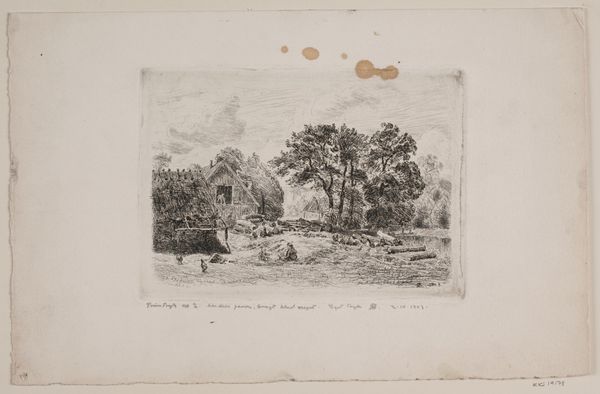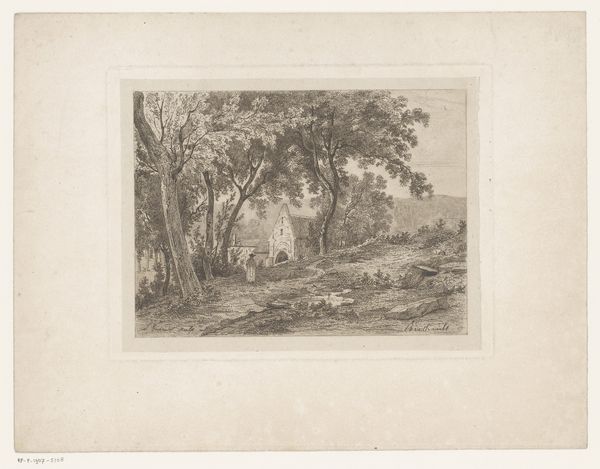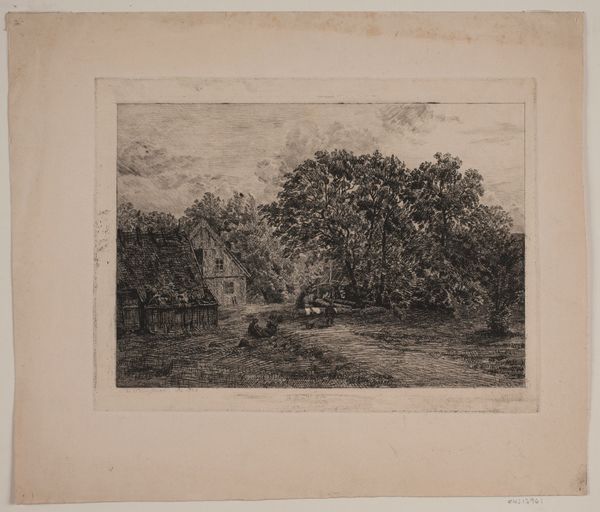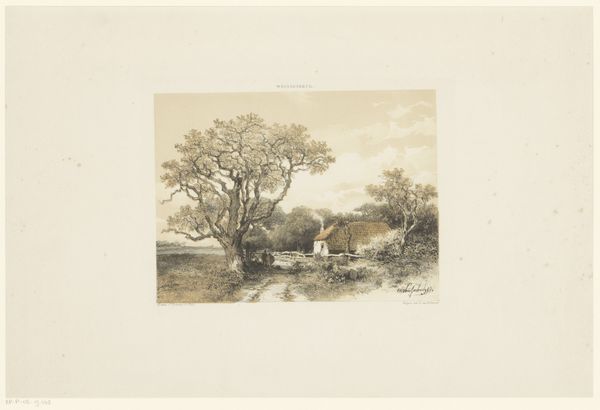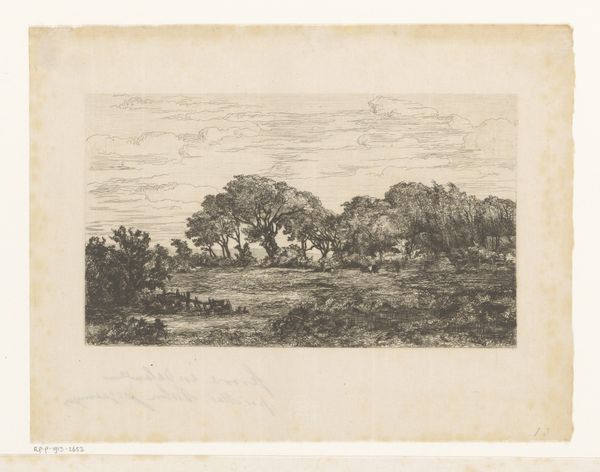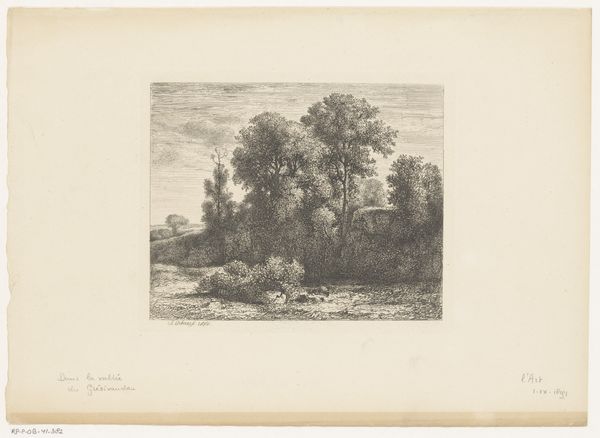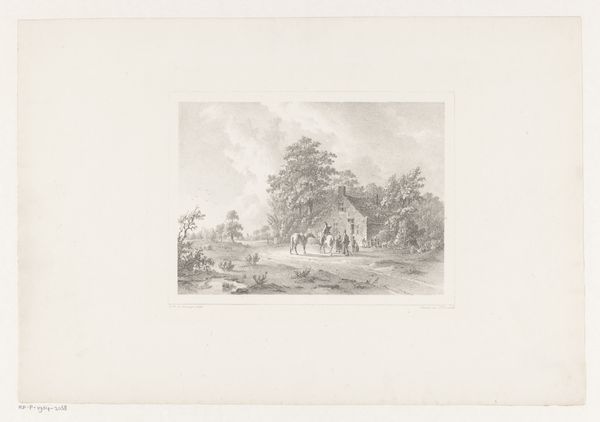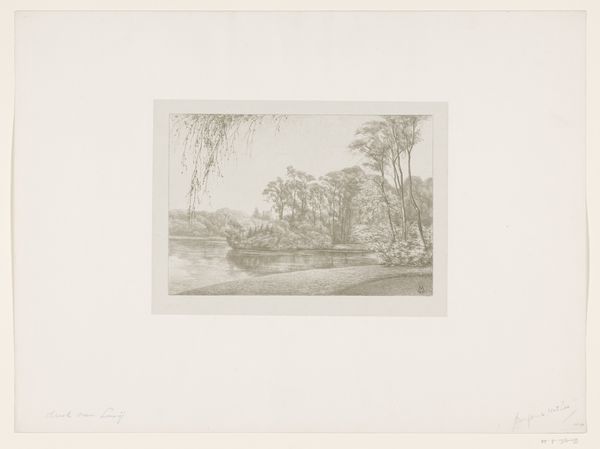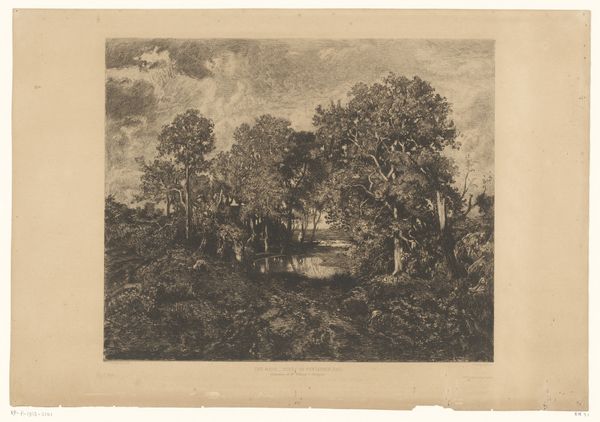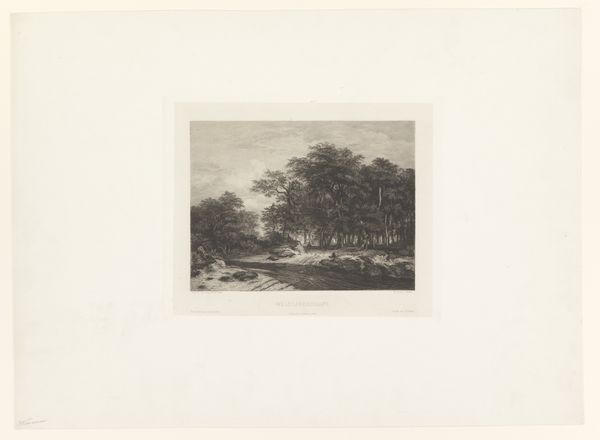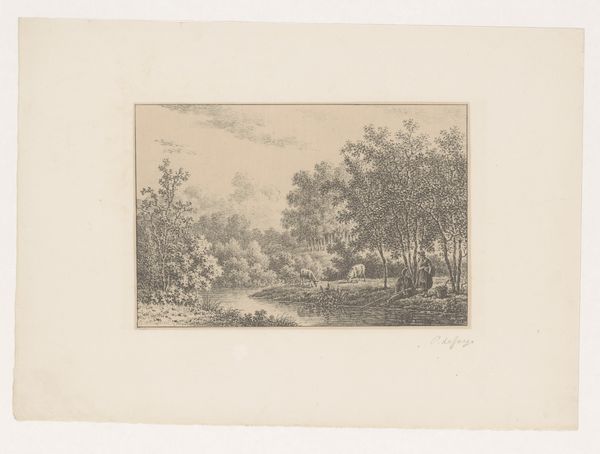
Dimensions: 126 mm (height) x 179 mm (width) (Plademål)
Curator: As we stand before Niels Skovgaard’s 1903 etching, “Kvarnen,” now residing at the SMK, I am immediately struck by its tonal complexity. Editor: It whispers a pastoral lullaby, doesn’t it? All soft lines and a hazy sort of contentment. The scale feels intimate, as if peering into a memory. Curator: Yes, the limited palette enhances the sense of serenity. The formal organization hinges on a subtle interplay between the structural integrity of the mill and the organic forms surrounding it. The careful deployment of hatching and cross-hatching defines spatial depth without overwhelming the composition. Editor: And the mill itself, standing as a rather universal symbol of provision, industry, and community life! Think of the grinding wheel, historically signifying transformation, turning raw material into sustenance. Even those sheep, gathered peacefully nearby, suggest bucolic plenty and well-being. Curator: Precisely. Skovgaard employs the etching medium to produce incredible detail, most noticeably in the facade of the buildings and surrounding vegetation. Note the meticulous delineation of textures – the thatched roof, the timber frame – which contribute to a visual tactility that’s rather compelling. Editor: These visual echoes certainly bring the work to life. It speaks of a specific time and place, yet the themes are timeless. The figures within appear humble and close to the soil. Curator: Indeed. And the artist carefully manipulates the tonal range here. Areas of shadow juxtapose lighter areas that provide focus on compositional details and suggest elements in depth. Editor: As someone fascinated by archetypes, I wonder about Skovgaard’s vision for Denmark’s cultural identity around 1900. Was he conjuring an ideal, hinting at agrarian virtues threatened by industrialization? Or celebrating enduring connections to the land? Curator: A delicate tension between romanticized ruralism and honest observation seems to be at work. Ultimately, it’s the compositional integrity—the distribution of value, texture, and form—that makes the artwork worth consideration. Editor: It reminds us that art, even in its most subdued forms, is often laden with unspoken meanings. I leave this work reflecting on the value of labor and peace, themes perpetually worth revisiting.
Comments
No comments
Be the first to comment and join the conversation on the ultimate creative platform.
